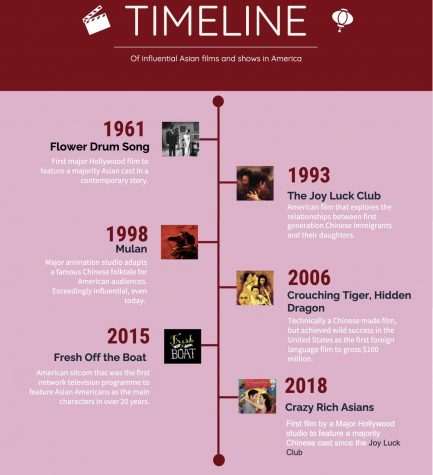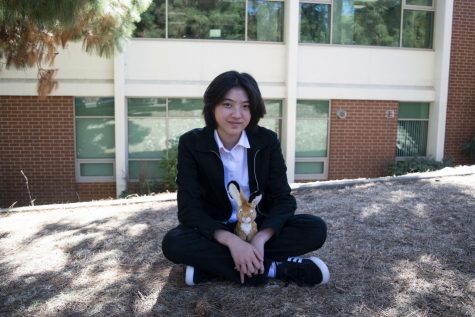Loyal, brave and true
Disney’s 2020 ‘Mulan’ is a case of failed diversity and empowerment
Despite the film depicting Mulan living in a tulour, these buildings did not actually exist during her time.
Everyone knows Disney Studios is on a quest to re-realize their classic movies for a younger generation. Whether it be hyper-realistic CGI lions or live action adaptations of virtually every fairytale under the sun, Disney has embarked on several massive cinematic ventures. One of the more recent ones was Disney’s 2020 adaptation of The Ballad of Mulan, a tale that Disney first adapted in 1998 in the form of an animated movie. This is the version that most people in the world, even in China, knew and loved as kids.
The original 1998 Mulan was by no means a completely historically or culturally accurate portrayal of the ballad, but as an adaptation it was done well. The 1998 version of Mulan captured the main themes of the original ballad: both men and women can have different but equal talents. It was this that gave the film its charm and appeal to both Western and Eastern audiences, and Disney’s 2020 Mulan hoped to fill those shoes even better than before.
Most Chinese people, myself included, had high hopes for this new film. Disney had promised a culturally accurate portrayal of the ballad, starting with axing Mushu, the comedic talking dragon, and removing the Western style musical numbers. What the studio seemed to have in store was a wuxia-style martial arts film that was historically accurate and more serious in tone. As someone who is an enthusiast of wuxia style media, I was ecstatic.
What we got instead was a film that completely misses the mark culturally, historically and thematically. Throughout its runtime, there are countless errors in regards to Chinese culture and the original story of the ballad.
The most obvious and most glaring error is how Disney handled Mulan’s story. In the 2020 version, Mulan is a prodigy. From the beginning, she is different from other girls her age. She is talented in martial arts and has prodigious talent in wielding qi.
This is the polar opposite of the original tale! In the Ballad of Mulan, the poem starts when she is sitting at her loom, weaving. She is a normal girl of the times, not a hyper-talented martial artist. Her comrades in the army don’t even know she is female until the fighting is all over; it is only at the end of the poem when they visit her at home that they realise she was a girl all along.
The last lines of the poem form a metaphor that Mulan tells her visiting comrades: “The male hare’s feet are swift, and the female hare often has closed eyes. But in times of danger when they are running side by side, who can tell which is female and which is male?” These lines summarize the theme of the ballad quite well: At first glance men and women might seem different, but despite these differences, both genders are competent and valid.

On the opposing side of this lesson sits the 2020 version of Mulan. This version of Mulan rejects femininity almost completely. She starts the film off as a strong warrior, and throughout the film outperforms her male comrades by just being faster, better and stronger. She becomes the hyper-masculine ideal that the original ballad was trying to fight against. Instead of empowering femininity, the 2020 Mulan tells girls that in order to be valued you have to be as strong as a man.
The second most obvious error has to do with less of the story and more with the cultural authenticity of the movie. In the film, Hua Zhou, Mulan’s father, speaks about qi, and how Mulan has “strong qi.” This aspect of Mulan, her “strong qi,” is one of the driving plot points of her character in the film. Her qi makes her unique and stronger than others, and as a consequence, she has to hide her qi. However, in actual Chinese culture and medicinal beliefs, having “strong qi” makes no sense! Qi is just the life force of a person that circulates through them, and everyone has it. It is seen in traditional Chinese medicine as just another facet of the body, and saying someone has to hide their qi is equivalent to saying someone has to hide their blood.
Furthermore, you cannot be born with such “strong qi.” A person can cultivate their qi to enhance their martial arts abilities, but no human is inherently born with the abilities that Mulan has at the beginning of the film. Qi is a central part of Chinese health and self defence, from acupuncture to tai-chi. The fact that Disney portrays something so important to Chinese culture in such a backwards way lessens the authenticity of this film.
The rest of the errors that Disney’s 2020 Mulan made do not affect the story as much but still contribute heavily to the film’s inaccurate portrayal. Here they are, in no particular order:
More Miscellaneous Cultural Errors:
- Witches do not exist in Chinese mythology; however, the 2020 film features a character who is addressed as a witch, and is treated as if she is a Medieval European version of a witch.
- The film also states that the phoenix is the emissary for ancestors, as well as a being that is reborn from ashes. While this is true in Greek mythology, there is no phoenix in Chinese mythology. The closest thing there is to a phoenix is a mythical bird named Fenghuang.
Historical Errors:
- Mulan is a character from northern China; however in the movie, she is shown living in a tulou, structures that only existed in the south of China. Additionally, tulou didn’t exist until hundreds of years after Mulan’s time.
- Mulan’s sword in the movie has three characters engraved on it: 忠(zhong) meaning faithful, 勇(yong) meaning brave, and 真(zhen) meaning honest. The movie uses these three characters as a thematic tagline: loyal, brave and true. While this is fine, actual Chinese swords would not have these characters engraved in such a random fashion.
There are even more historical errors in the film, but the ones above are the most grievous. These aspects of the film make the end product of 2020 Mulan feel like a western story wrapped in Chinese gift paper. Most of the core themes and aspects of the film are not Chinese, they are western. Disney’s 2020 Mulan is a case of failed diversity and empowerment.

Dream destination? Shanghai, China
Interests/ hobbies? Sleeping, Reading comics, making intricate plans that never come to fruition
In...











